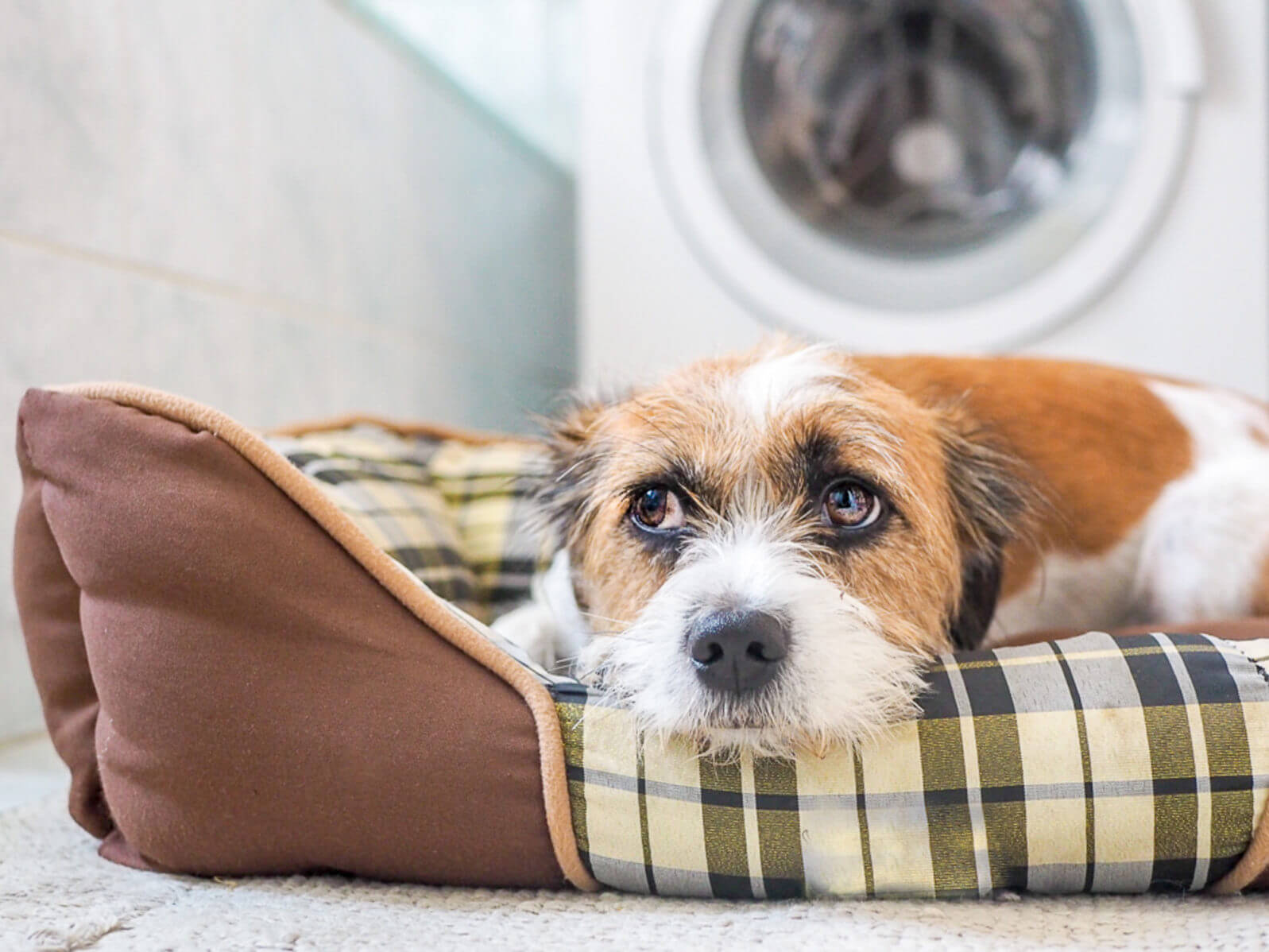
How Thunderstorms Affect Pets
I know many of you have noticed that thunderstorm season has begun. Those storms that roll in like clockwork every afternoon leaving us and our lawns drenched and our pets anxious. I know for many it can be difficult to watch as our normally well behaved calm pet begins to pace or hide, follow us around, or even whimper. In extreme cases can cause damage to doors, carpet, and even themselves. I have even treated pets that have broken through windows during one of these situations. This is surprisingly a very common problem seen and if not addressed can worsen over time.
As veterinarians, we, unfortunately, do not know what all the triggers are that cause pets to become anxious during a storm and we feel it may have numerous components and be different for each pet. This can be a combination of sounds like wind and thunder, lightning, changes in barometric pressure, and static electricity. Pets may also smell these changes before we can, causing their anxiety to start early and build up prior to the storm approaching. Based on a survey by Tufts University herding breeds may also be at increased risk for anxiety including thunderstorms, fireworks, and separation.
What To Do If Your Pet Has Thunderstorm Anxiety
So what can we do for these pets we have identified as having thunderstorm anxiety? The good news is there are a lot of options when it comes to helping our pets during this stressful situation, the bad news is it can take trial and error to find the technique that will work best for each pet.
- Being at hand: I know that we may not always be home when one of these storms occurs and our pet is most stressed. But it has shown that pets do become less anxious when there is a person at home. Separation anxiety can make matters worse, which is why it is recommended to be with them. For some this may not always have to be the owner and having a pet at a daycare facility during the season can be beneficial. This will also ensure that you won’t come home to house torn apart or an injured dog.
- Stay calm: Our pets can sense our emotions and if we become anxious over their behavior it will only serve to worsen their anxiety. Try not to convey anger, frustration, or exacerbation to your dog, trust me this will only make the situation worse.
- Counter Conditioning and Desensitization: This is a training technique that has a wide range of uses in pet training but can work great for mild symptoms or in a young dog just beginning to show the signs of thunderstorm anxiety. At some point, your pet came to associate the sounds, sights and smells of a storm with something bad. Counter conditioning involves techniques used to change this association from one of something bad and fear to something good. You can begin by picking a dog bed or blanket to use for these purposes and spend time on it with your dog, giving them their favorite treats, love and attention. On this blanket, only good things should happen. Now for the desensitization part, while your dog is receiving treats and love on the blanket you can begin to play thunderstorm sounds very low in the background. Slowly over time increasing the volume, all the while they are still receiving treats and love. Over time this can change the experience during a storm from one of fear to an expectation of treats and attention.
- Pheromone diffuser plug-ins: These products mimic the comforting pheromones emitted by the mother dogs and can have a calming effect. They are also found in collars, sprays, and wipes. There is no odor detected by people and it is non-toxic to pets.
- Anxiety reducing attires: These are garments, also known as anxiety vests, made for dogs that create a swaddling effect and can help in a number of different types of anxiety. Again this may not work for every pet but is another simple non-invasive way to decrease anxiety.
And of course, as a last resort, there are anti-anxiety medications that we can prescribe to pets where truly nothing else has helped and especially for those that may cause harm to themselves. If you have health concerns for your pet, prescription medication could be an option to go with. Often the best course of treatment involves a combination of environmental changes, behavioral modification, and medication. Noise sensitivities to thunder can really affect your pet which is why it is important to know what to do if your pet has thunderstorm anxiety.
